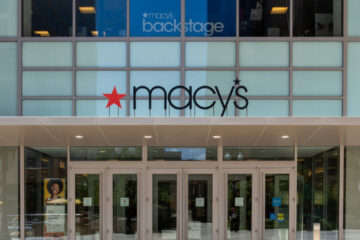One of the biggest problems to solve for in the 21st century retail world is waste.
Some companies that use a lot of textiles and material donate overspill to discount department stores like TJ Maxx (TJX) . Walk into any local TJ Maxx, Marshalls, or Ross (ROST) and you’ll likely see name brands at discount prices. It’s not uncommon to find labels like Michael Kors, Marc Jacobs and Crocs lining the shelves, retailing for often 20%-50% off the original ticket price.
Related: KitchenAid unveils new luxury appliance coffee drinkers will love
But not everybody has the time or patience for a treasure hunt, and other brands like to keep their products more exclusive.
It’s rare that you’ll find items from Lululemon (LULU) , Nike (NKE) , Chanel, or Ralph Lauren (RL) lining the shelves of a Marshall’s. These brands have a particularly difficult equation to solve for, as donating extra unwanted clothing or materials drives down the profit and rarity of its items. Make too little of a given item, and you risk selling out and disappointing your customers. Make too many, and you’re flirting with an excess problem.
Some luxury labels even resort to burning their excess inventory to avoid spillover.
And while some companies have begun to encourage customers to donate back old clothing as a part of a sustainability program, it’s still largely uncommon for big brands. Niche labels like Marine Layer have a more robust recycled fiber program, with the company priding itself in its clothes’ soft, broken-in feel, but not everybody has caught on, and even fewer people want to feel like they’re wearing someone else’s dirty laundry.
The result is often that old clothes end up in consignment shops, at best, and in landfills, at worst.
J. Crew solves for a big problem
Slowly, however, some major brands are starting to catch on. In February, Lululemon announced it would launch a new material for some of its styles, Nylon 6,6, which is made from recycled nylon. Nylon is a notoriously difficult material to break down, since it takes a long time to decompose in landfills and can wear out quickly with rough use or exercise.
J. Crew store entrance in downtown Toronto. Photo by Roberto Machado Noa/LightRocket via Getty Images
Roberto Machado Noa/Getty Images
It is also used to make a majority of our favorite athletic apparel, like yoga pants, leggings, sports bras, bathing suits, shorts, and some footwear.
J. Crew is now another large label to enter the polyester recycling business. It’s working with recycling tech company SuperCircle to take in customers’ old donated swimsuits to create new “textile-to-textile recycled,” materials.
Customers can bring in their old or unwanted bathing suits, either from J. Crew or any other label, for a $5 in-store credit toward J. Crew bathing suits valid until August 2024. All swimsuits made from polyester, 100% nylon, and Econyl items are eligible for the credit and customers may earn up to $20 for participating in the program.
It says none of the materials will end up in landfills or consignment shops in poorer countries. Bathing suits that can’t be recycled for clothing will be repurposed other ways, like for insulation or compression products.
“Not everything can be fibre-to-fibre recycled, but these incremental changes are what enable J.Crew as well as the retail industry to find a wider scale solution,” Lisa Greenwald, chief merchandising officer at J.Crew said. “This space is continually evolving.”
Related: Veteran fund manager picks favorite stocks for 2024


